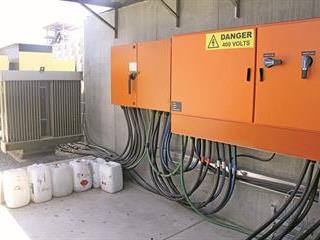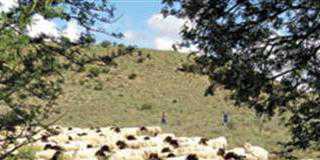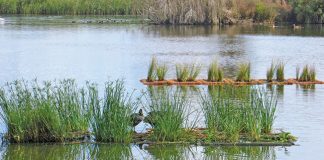
On a visit to Italy three years ago, South African farming brothers Willem and Paul Basson were struck by the number of European farmers who had installed biogas plants to generate electricity from cow dung. Inspired by the concept, they were determined to do the same on their farm Uilenkraal near Darling in the Western Cape.
Due to the weak rand, however, importing a biogas plant from Europe was out of the question. So they negotiated with a local engineering company, Cape Advanced Engineering (CAE), to design an affordable alternative.
CAE studied the best European and US research on biogas plants and came up with a design for Uilenkraal that suited local conditions and needs. Instead of a circular biogas digester with a domed roof, which is typical in Europe, a rectangular tent-like structure was built on Uilenkraal.
Construction started in 2013, the first biogas was produced by the middle of 2014, and since December, the two CAE-manufactured generators run on Uilenkraal’s purified biogas have each produced 200kWh daily.
How the system works
CAE’s Dr Andrew Taylor says South African farmers pay less than R1/kWh for Eskom power. As a result, CAE came up with an effective design based on a low-cost system.
According to Willem Basson, the anaerobic bio-digester functions essentially like a cow’s rumen, which requires three different bacteria and enough heat for the fermentation process. The volume of the bio-digester is 7 000m³ and a heating system keeps the interior temperature at 37°C. A total of 200m³ of slurry a day is pumped into the bio-digester from the central dung-collector (misput).
By definition, anaerobic fermentation takes place in an environment that contains no or little oxygen. During the breakdown of organic substances into smaller molecules, methane gas is released. CAE equips its biogas plants with a simple yet effective mechanism to mix the organic material inside the bio-digester to prevent the material from forming a crust at the top or sinking to the bottom. The system does not have an augur or moving parts, so maintenance is simple and reliable.
To ensure the stability and profitability of the system, several crucial parameters must be continually assessed: the quality of the manure, the interior temperature, the pH level, the retention period, the conversion of organic material into methane gas, and the purity of the methane. All production processes are monitored by computer.
“The biogas output is more or less double the daily requirement on Uilenkraal, but because no provision exists in South Africa to buy electricity from farms for the national grid, approximately half of Uilenkraal’s biogas production is burnt off from a flare stack.”
Although Taylor strongly advocates that this situation must be corrected in South Africa, he points out that there are only about 100 farms in the country with both sufficient biomass and a large enough electricity demand to justify the erection of their own biogas plants.
This situation could change once Eskom allows farmers to sell surplus electricity to the national grid. As an example of what could be achieved, he singles out Germany, where about 8 000 biogas plants have been constructed on farms and many jobs created.
Uilenkraal
Uilenkraal has a dairy herd of 2 350 cows, of which 1 200 are housed in Italian-designed sheds. An automatic scraper on the floor of each shed scrapes the manure into a dung channel three times a day. It is then pumped into the central dung-collector, and from there it goes to the bio-digester.
According to Willem Basson, the production of biogas immediately cut the farm’s monthly electricity bill from R110 000 to R45 000. And since both generators have come into operation, this has been reduced even more – to R12 000. This is almost a 90% reduction of the original figure.
He explains that the feed mill takes up 60% of Uilenkraal’s electricity consumption, the dairy 20% and centre pivot irrigation also 20%. Uilenkraal remains connected to the grid, but should Eskom allow farmers to supply their own surplus electricity into the grid, the farm’s biogas plant could be modified within a short period to do this.
Long-term investment
The Bassons have invested R10 million in the plant and under current circumstances it will pay for itself within 10 years. This period could be reduced should Eskom increase its electricity tariff drastically or farmers be permitted to contribute to the national supply.
The engines that generate electricity from biogas require regular maintenance, which costs 45c/ kWh. The plant has an expected lifespan of 30 years. According to Taylor, the cost per megawatt of the system’s installed capacity is between 42% and 55% below that of a European system.
Other benefits
To help ensure that high-quality biomass is fed into the bio-digester, the Bassons started using compost bedding instead of sand for the cows. They found that this reduced mastitis in the herd. They have considered using some of the compost from the bio-digester for the crops on the farm, but have decided that for now they will use it exclusively as bedding in the cow cubicles.
Email Willem Basson at [email protected].













